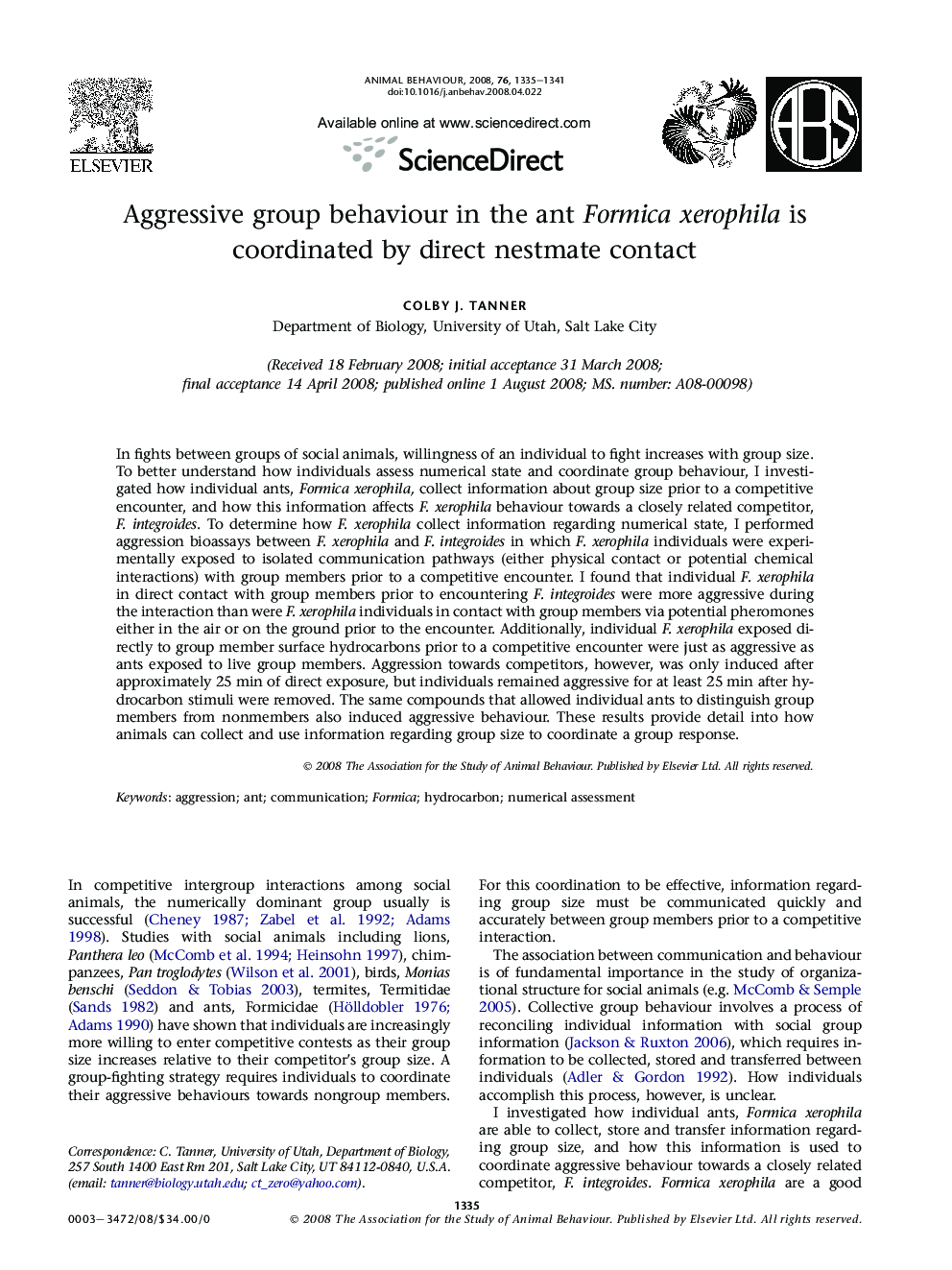| Article ID | Journal | Published Year | Pages | File Type |
|---|---|---|---|---|
| 2418772 | Animal Behaviour | 2008 | 7 Pages |
In fights between groups of social animals, willingness of an individual to fight increases with group size. To better understand how individuals assess numerical state and coordinate group behaviour, I investigated how individual ants, Formica xerophila collect information about group size prior to a competitive encounter, and how this information affects F. xerophila behaviour towards a closely related competitor, F. integroides. To determine how F. xerophila collect information regarding numerical state, I performed aggression bioassays between F. xerophila and F. integroides in which F. xerophila individuals were experimentally exposed to isolated communication pathways (either physical contact or potential chemical interactions) with group members prior to a competitive encounter. I found that individual F. xerophila in direct contact with group members prior to encountering F. integroides were more aggressive during the interaction than were F. xerophila individuals in contact with group members via potential pheromones either in the air or on the ground prior to the encounter. Additionally, individual F. xerophila exposed directly to group member surface hydrocarbons prior to a competitive encounter were just as aggressive as ants exposed to live group members. Aggression towards competitors, however, was only induced after approximately 25 min of direct exposure, but individuals remained aggressive for at least 25 min after hydrocarbon stimuli were removed. The same compounds that allowed individual ants to distinguish group members from nonmembers also induced aggressive behaviour. These results provide detail into how animals can collect and use information regarding group size to coordinate a group response.
